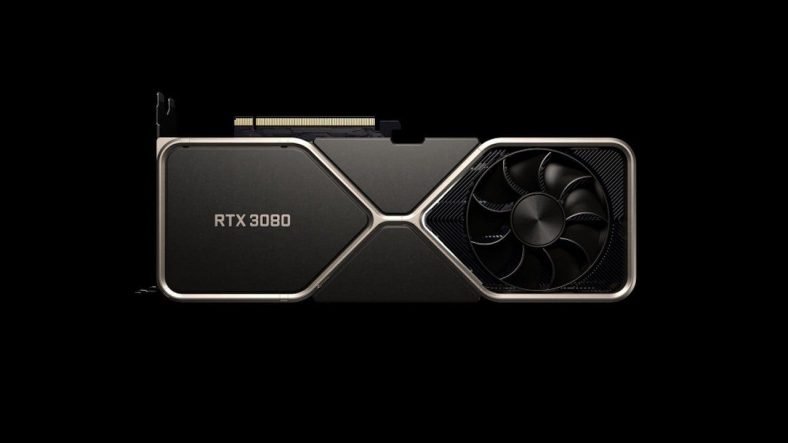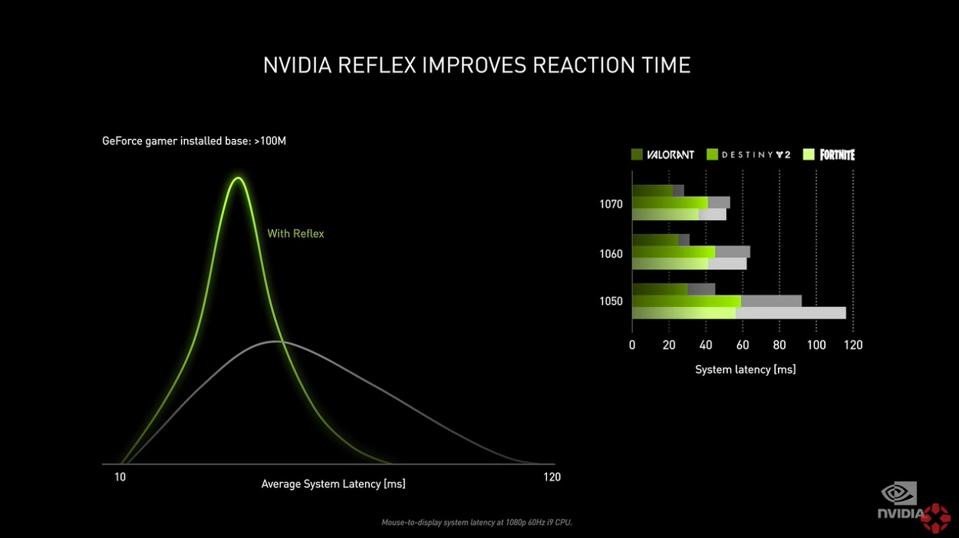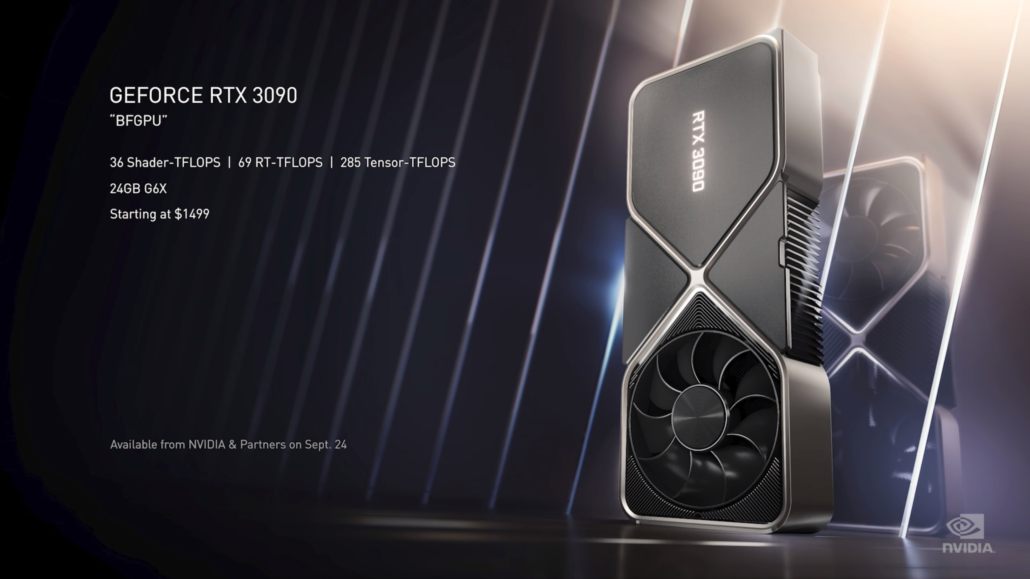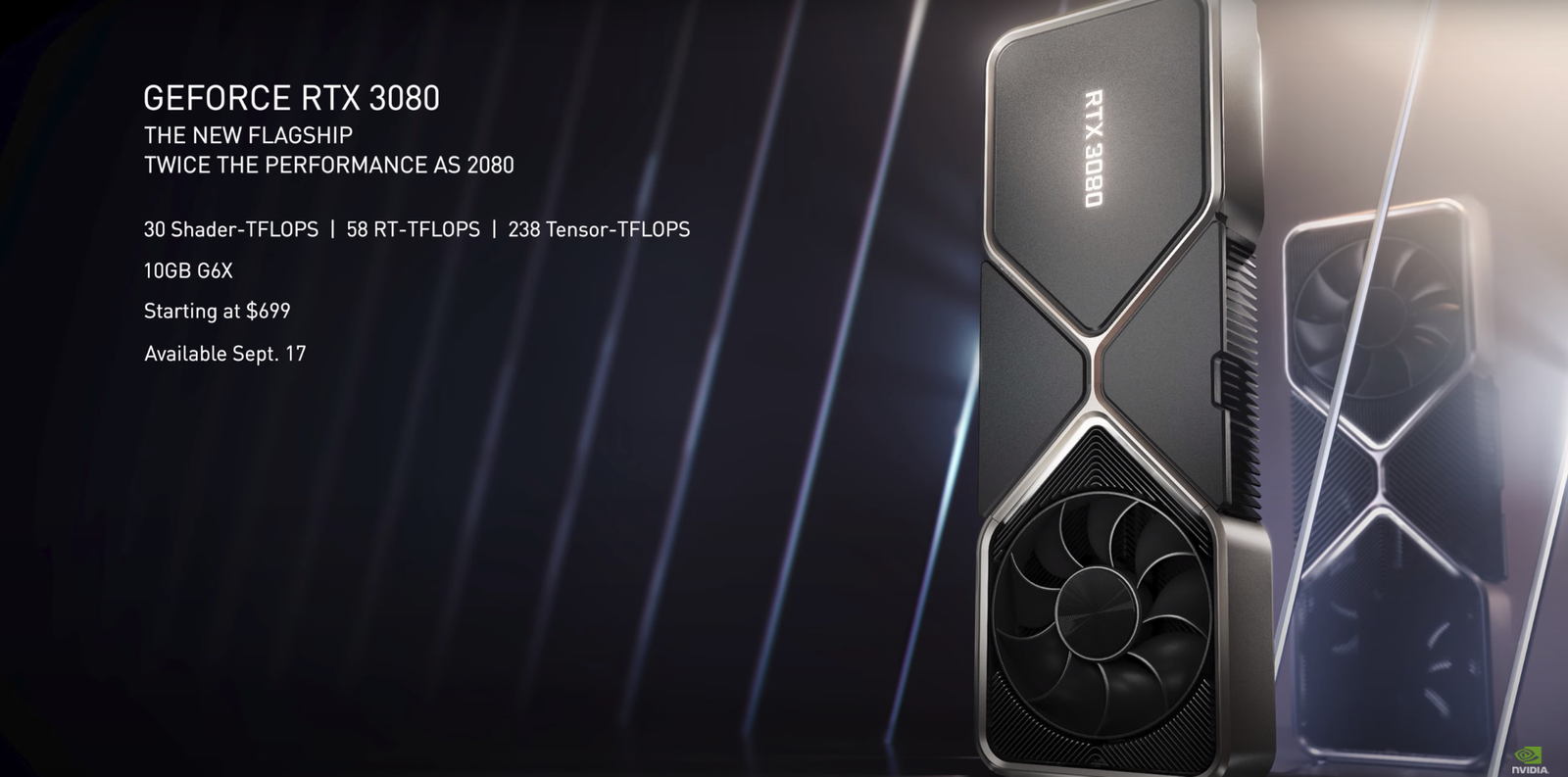
The long wait is finally over as NVIDIA has finally unveiled its Ampere series RTX 3000 graphic cards. NVIDIA has revealed the RTX 3090, 3080, and 3070 cards, and the prices and specifications have shocked everyone. NVIDIA started the next chapter in gaming history with their event today. They showed first look at the new cards as well as performance benchmarks on the event hosted by Jensen Huang, the CEO of the company.
NVIDIA revealed the RTX 3090 as the flagship card of the 3000 series. NVIDIA also announced a lineup of new RTX and AI-powered technologies aimed squarely at gamers and streamers, including NVIDIA Reflex, Omniverse Machinima, and NVIDIA Broadcast. NVIDIA now has improved DLSS 2.0 which gives a massive two times performance bump while also looking better than conventional rendering.
At the start of the event, NVIDIA revealed the NVIDIA Reflex which is a new feature that optimizes the rendering pipeline across the CPU and GPU to reduce latency by up to 50%. NVIDIA Reflex will be released in September and will arrive with the next NVIDIA Game Ready Driver. It will work on a variety of Nvidia GPUs. Fortnite, Valorant, and Destiny 2 will be amongst the first games to be compatible with reflex technology. The RTX 3000 series cards are also the first NVIDIA cards which support the PCIe gen 4.0 support.
Below is the list of the new technologies which have come to life through NVIDIA’s Ampere architecture.
- New streaming multiprocessors: The building block for the world’s fastest, most efficient GPU, delivering 2x the FP32 throughput of the previous generation, and 30 Shader-TFLOPS of processing power.
- Second-gen RT Cores: New dedicated RT Cores deliver 2x the throughput of the previous generation, plus concurrent ray tracing and shading and compute, with 58 RT-TFLOPS of processing power.
- Third-gen Tensor Cores: New dedicated Tensor Cores, with up to 2x the throughput of the previous generation, making it faster and more efficient to run AI-powered technologies, like NVIDIA DLSS, and 238 Tensor-TFLOPS of processing power.
- NVIDIA RTX IO: Enables rapid GPU-based loading and game asset decompression, accelerating input/output performance by up to 100x compared with hard drives and traditional storage APIs. In conjunction with Microsoft’s new DirectStorage for Windows API, RTX IO offloads dozens of CPU cores’ worth of work to the RTX GPU, improving frame rates and enabling near-instantaneous game loading.
- World’s fastest graphics memory: NVIDIA has worked with Micron to create the world’s fastest discrete graphics memory for the RTX 30 Series, GDDR6X. It provides data speeds of close to 1TB/s system memory bandwidth for graphics card applications, maximizing game and app performance.
- Next-gen process technology: New 8N NVIDIA custom process from Samsung, which allows for higher transistor density and more efficiency.
Coming to the Graphics Cards themselves first is the RTX 3090. The GeForce RTX 3090 is the fastest PC gaming graphics card and nothing comes even close to it. The RTX 3090 has a whopping 10496 CUDA Cores and 24 GB GDDR6X VRAM. The card has a boost clock of up to 1.7 GHz and has a bus bandwidth of 384-bit which allows data rate of 19.5 Gbps.
The RTX 3090 consists of the GA102 GPU chip which is the fastest chip that NVIDIA has produced. The Card is based on a custom Samsung 8nm process and comes with Nvidia’s second-generation Ray Tracing cores and third-generation Tensor cores. It features a total of 28 Billion transistors and the GPU chip measures at 628mm2 which makes it the 2nd biggest gaming GPU ever produced right below the Turing TU102 GPU.
The RTX 3090 will require two 8-pin power connectors and has a TDP of 350W. The Founder’s edition of the RTX 3090’s official release price is 1499$.
Next in line is the RTX 3080 which is twice powerful than the RTX 2080Ti. NVIDIA claims that the RTX 3080 will be able to provide 60 frames per second gaming experience at 4K even with ray tracing enabled. The GeForce RTX 3080 has 8,704 CUDA cores and a clock speed of 1.71GHz. The card has 10GB of GDDR6X memory and a 320-bit memory bus. The RTX 3080 has a TDP rating of 320W and will require 8-pin PCIe power connectors. The price of the RTX 3080 Founder’s edition is 800$.
Last is the RTX 3070 which features 8 GB of GDDR6 memory and 5,888 CUDA cores. The RTX 3070 has a boost clock of 1.73 GHz and uses a 256-bit bit bus. The RTX 3070 has a TDP of 220W which is reasonable compared to the 3090 and 3080. It also requires one 8-pin PCIe power connector to operate. It will set you back $499.
Regardless of the model, the Ampere-based graphics cards offer three DisplayPort 1.4a outputs and one HDMI 2.1 port. NVIDIA also announced RTX support for several games including Fortnite and the upcoming Call of Duty: Coldwar. NVIDIA also announced new AI-powered technologies including the Omniverse Machinima and RTX Broadcast.
Omniverse Machinima will offer content creators a streamlined machinima creation suite that supports asset imports, voice acting, and facial animation via webcam input which will use the AI tensor cores featured in all the three RTX 3000 cards. GeForce Broadcast is the feature to build on GeForce Voice in that it leverages RTX AI cores to remove background audio noise. The technology also allows streamers to play with virtual background effects and auto-frame their webcam picture. It will use the Ampere’s AI tensor cores to enhance the game broadcasting and streaming experience.
The GeForce RTX 3090 and RTX 3080 will be available on September 24 and 17, respectively, with the GeForce RTX 3070 coming later in October.
Which Nvidia 3000 series RTX GPUS is your favorite from the reveal event and which one will you be opting for your build? Let us know in the comments section below.















These cards are indeed a beast, I must say. The Comparison is good too!
Indeed.